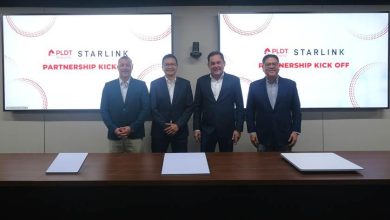TrendForce Finds Changing AI Market Landscape Fuelled by Geopolitical Tensions Between China and US
China Is Accelerating Efforts for AI Chip Independence, with Huawei and Cambricon Among the Leaders

TrendForce has found out in its latest research that there is a surge in demand for Artificial Intelligence (AI) servers. This surge is, as a result, is accelerating the pace at which major US CSPs are developing in-house ASICs. As such, new iterations are being released every one to two years. In China, the AI server market is adjusting to new US export controls introduced in April 2025. These controls are expected to reduce the share of imported chips (e.g., from NVIDIA and AMD) from 63% in 2024 to around 42% in 2025.
Meanwhile, domestic Chinese chipmakers—such as Huawei—are projected to boost their market share to 40%. This is nearly on par with imported chips and is supported by strong government policies promoting homegrown AI processors.
TrendForce notes that CSPs are prioritising ASIC development to:
- Reduce reliance on NVIDIA and AMD.
- Gain greater control over cost and performance.
- Bolster supply chain flexibility.
This shift is essential for managing growing AI workloads and optimizing long-term operational spending.
TrendForce Identifies CSP Leaders
According to TrendForce, Google leads among US CSPs with its TPU v6 Trillium, which offers improved energy efficiency and performance for large-scale AI models. Google has also expanded from a single-supplier model (Broadcom) to a dual-sourcing strategy by partnering with MediaTek. This move enhances design flexibility, reduces supply chain risk, and supports more aggressive adoption of advanced process nodes.
AWS continues to focus on Trainium v2, co-developed with Marvell, which is designed for generative AI and LLM training. The company is also working with Alchip on Trainium v3, with TrendForce forecasting the strongest year-over-year growth in ASIC shipments among US CSPs for AWS in 2025.
Meta, having deployed its first in-house AI accelerator MTIA, is now co-developing MTIA v2 with Broadcom. The new version emphasises energy efficiency and low-latency architecture. It is also in line with Meta’s highly customised inference workloads to ensure optimal performance and operational cost control.
Microsoft remains heavily reliant on NVIDIA GPUs for AI server deployments but is rapidly advancing its own ASIC efforts. Its Maia series, tailored for generative AI on the Azure platform, is progressing toward Maia v2, with GUC handling physical design and production. Microsoft is also collaborating with Marvell on an enhanced version of Maia v2 to strengthen its chip design capabilities and mitigate development and supply chain risks.
China Accelerates AI Chip Independence
Huawei is actively developing its Ascend series of AI chips, targeting domestic needs such as LLM training, smart city infrastructure, and AI-powered telecom networks. With national-level support and surging demand from internet giants and DeepSeek’s LLM ecosystem, Huawei is increasingly positioned to challenge NVIDIA’s dominance in China’s AI server market.
Cambricon is also expanding its Siyuan (MLU) chip series to support AI training and inference in the cloud. After conducting feasibility tests with major Chinese CSPs throughout 2024, the company is expected to ramp up deployment of its solutions in 2025.
TrendForce also notes that Chinese CSPs are accelerating their ASIC initiatives. Alibaba’s T-Head has launched the Hanguang 800 inference chip. Baidu is moving from volume production of Kunlun II to development of Kunlun III, which is designed for high-performance training and inference. Tencent, in addition to its in-house Zixiao inference chip, is leveraging Enflame’s ASIC solutions via strategic investment.
In the face of geopolitical pressure and supply chain restructuring, Chinese chipmakers such as Huawei and Cambricon—and in-house ASIC efforts by major CSPs—are becoming increasingly vital. This trend is expected to drive the global AI server market toward a bifurcated ecosystem: one within China, and another outside of it.
For more information on reports and market data from TrendForce’s Department of Semiconductor Research, please click here, or email the Sales Department at SR_MI@trendforce.com.
For additional insights from TrendForce analysts on the latest tech industry news, trends, and forecasts, please visit https://www.trendforce.com/news/.




